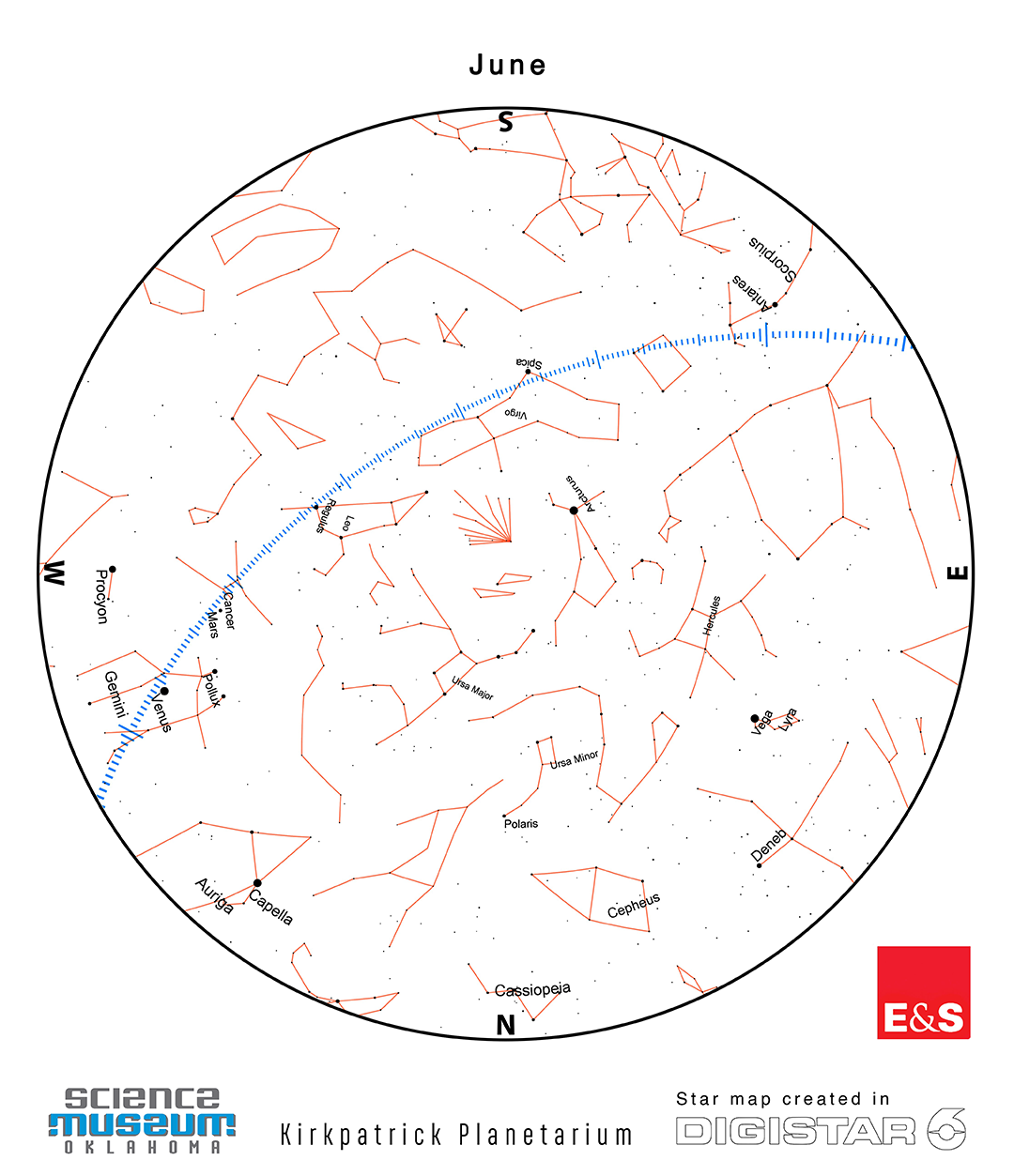Red Dirt Astronomy: Skies & Space for June
May 31, 2023
Planets:
Mercury - For the month of June, Mercury will remain too close to the Sun to be seen from the Northern Hemisphere.
Venus - Venus will continue to be the dominant object in the evening sky for June, visible from around sunset to midnight for the entire month. If you haven’t had the chance to catch Venus yet this year, don’t worry because you have until around the end of July to take a look before it sets with the Sun in the evening.
Mars - Mars will continue eastward across the sky for the month of June, briefly passing by our other neighbor, Venus, during the last week of June and the first half of July. The moon will join these two very closely on the 21st of June, and will make for an excellent binocular viewing. Starting the month in the constellation of Cancer, it will meet up with Venus in Leo by the end of the month.
Jupiter - While Jupiter continues to rise in the early morning sky with the other gas giants, it will see a number of double shadow transits, similar to last month. While it starts the month rising at around 5:00 a.m., briefly seen before sunrise, by the end of the month it can be seen as early as 3:00 a.m., making it another excellent morning target among the other gas giants.
Saturn - As Saturn gets closer to the Earth throughout June, it will become slightly brighter in the early morning sky. After the 18th of June, Saturn will begin its retrograde motion that takes place over four-and-a-half months. This retrograde motion means that it will appear to slowly move across the sky in the opposite direction, all while remaining in the constellation of Aquarius. By the end of the month, Saturn can be seen rising in the East as early as 1:00 a.m..
Uranus - During the second half of June, Uranus can be seen low in the Eastern sky just before sunrise, around 4:30 a.m.. As the month progresses, it will rise earlier and earlier in the morning along with Jupiter, Saturn, and Neptune, giving you plenty of opportunity to catch an early morning view of Uranus through a telescope.
Neptune - Similar to the other gas giants, Neptune can be seen in the early morning sky with a telescope in the constellation of Pisces. Neptune is currently moving so slowly across the sky, it’s position won’t appear to have changed much at the end of June, so this is a great time for telescope viewings of our ocean-blue neighbor in the early morning before sunrise.
Sky & Space Events and Anniversaries: June 2023
June 2 - Surveyor 1 lands on the Moon, the first US spacecraft to do so (1966)
June 3 - Full Moon
June 3 - Ed White becomes the first American to walk in space (1965)
June 4 - Double Shadows on Jupiter
June 7 - Double Shadows on Jupiter
June 10 - Last Quarter Moon
June 11 - Double Shadows on Jupiter
June 14 - Jupiter near Moon, Double Shadows on Jupiter
June 15 - Uranus near Moon
June 16 - Pleiades (M45) near Moon,
June 16 - Valentina Tereshkova becomes the first woman in space (1963)
June 17- New Moon
June 18 - Double Shadows on Jupiter
June 19 - Viking 1 arrives in Mars orbit (1976)
June 20 - Pollux near Moon
June 21 - Summer Solstice, Venus and Mars near Moon
June 26 - First Quarter Moon
June 30 - Asteroid Day


